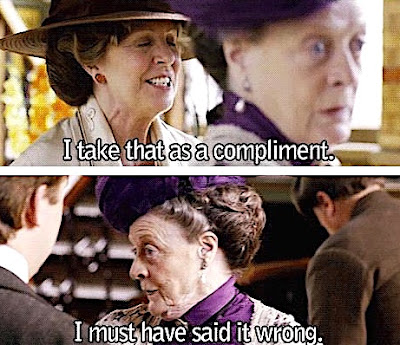Reading TV
We don't watch TV any more, we read it. We have permanently activated closed captions and dialog always runs along the bottom of the screen. That's how we watch TV.
It started with the British period dramas we liked to watch -- they speak English but it's sort of unintelligible (to us).
It got worse with modern cinema streaming when technology created for movies had to be shrunk down for streaming devices, and dialogue crispness was badly compromised.
It's terrible now, and the industry knows it. Television booms action sequences and blasts music, but fades and distorts when people speak.
At first it was distracting to have subtitles on the screen. You have to switch constantly between comprehending text and watching images, you can't do both simultaneously. But we've adapted to it and now I flick back and forth between the face and the words.
There are even descriptive captions of sound effects, like "playing ethereal music" or "laughing maniacally" or "aggressively eats breakfast" and often in newscasts or interviews where stenographers have to do immediate live captioning, there are hilarious misspellings. It's fun.
One mother of second and third graders once wrote that she was reinforcing reading skills for her young kids by setting the TV to Spanish and then turning on subtitles. They had to read the words to understand their shows and didn't realize you could get them speaking in English. Sort of genius.
Even when the speech sound is okay enough on a program we watch, the captions are on now. It's what we are used to, so we read TV all the time now. You probably do too.



Comments